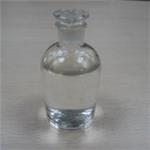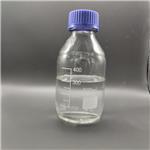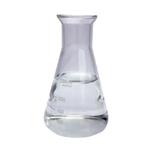- Lauroyl chloride
-

- $60.00 / 1kg
-
2023-09-26
- CAS:112-16-3
- Min. Order: 1kg
- Purity: 99%
- Supply Ability: 20 tons
- Lauroyl chloride
-

- $30.00 / 1KG
-
2023-09-06
- CAS:112-16-3
- Min. Order: 50KG
- Purity: 99%
- Supply Ability: 500000kg
- Lauroyl chloride
-

- $5.00 / 1KG
-
2023-06-20
- CAS:112-16-3
- Min. Order: 1KG
- Purity: 99%
- Supply Ability: 10000kg
|
| | Lauroyl chloride Basic information |
| | Lauroyl chloride Chemical Properties |
| Melting point | -17 °C | | Boiling point | 134-137 °C/11 mmHg (lit.) | | density | 0.946 g/mL at 25 °C (lit.) | | vapor pressure | 0.5Pa at 20℃ | | refractive index | n20/D 1.445 | | Fp | >230 °F | | storage temp. | Store below +30°C. | | solubility | Soluble in ethanol and methanol. | | form | Liquid | | color | Clear | | Water Solubility | reacts | | Sensitive | Moisture Sensitive | | BRN | 1281201 | | Stability: | Stable. Incompatible with strong oxidizing agents, amines, strong bases. Do not allow to come into contact with water or moisture. | | InChIKey | NQGIJDNPUZEBRU-UHFFFAOYSA-N | | CAS DataBase Reference | 112-16-3(CAS DataBase Reference) | | NIST Chemistry Reference | Dodecanoyl chloride(112-16-3) | | EPA Substance Registry System | Dodecanoyl chloride (112-16-3) |
| | Lauroyl chloride Usage And Synthesis |
| Chemical Properties | colourless to light yellow liquid with odor of hydrochloric acid. Soluble in ether, decomposed in water and alcohol. | | Uses | Lauroyl chloride is used as tailoring agent for chemical modification of nanocelluloses of different length, nanofibrillated cellulose and cellulose nanocrystals and in the preparation of acylated collagen with water solubility and better surface activity. It is also employed as organic low-friction boundary lubricant in the preparation of novel polyvinyl alcohol hydrogel.It is used in the synthesis of hemicellulose-based hydrophobic biomaterials. | | Preparation | Lauroyl chloride is synthesized by the reaction of lauric acid with thionyl chloride.
Reaction: The flask was charged with lauric acid 1330 (200 g, 1.0 mol) and catalyst (imidazole, 2-methyl imidazole, 2.0 mol% based on the acid), and the mixture was heated with stirring to 90 C°. The stirred mixture was maintained at 90 C° for 1 h, at which time gaseous phosgene was introduced below the surface of the liquid at such a rate as to maintain a gentle phosgene reflux from the deflamator. Phosgene addition was regulated and calculated with the aid of a tubular flowmeter. The reaction was continued, generally within the temperature range 80–100 C°, until hydrogen chloride was no longer evolved (cessation of heat generation at the top of the water scrubber). The phosgene feed was stopped and the reaction mixture was kept at 85–95 C° with gentle phosgene reflux from the deflamator until the evolution of carbon dioxide had ceased (30–60 min, as evidenced by cessation of the gas entering at the base of the scrubber column). Occasionally, additional phosgene was required during this period to maintain phosgene reflux and to complete the reaction. Following complete reaction, the deflamator was replaced by a 10-in. (25 cm) glass helix packed distillation column fitted with a total reflux head, and dissolved phosgene was removed from the stirred reaction product by purging with dry nitrogen at 90 C° for 2 h. The product was distilled at 10 mmHg as a single fraction. Yield: 91–94.5% of lauroyl chloride. | | Application | Dodecanoyl chloride aslo known as lauroyl chloride is an acid chloride that can be used as a reagent for the surface modification of:
Chitosans, by converting it into acylated chitosans for increasing solubility in organic solvents.
Microfibrillated cellulose (MFC) for improving dispersibility in biopolyamide nanocomposites.
It can also be used as a:
Starting material for the synthesis of (R)-3-aminotetradecanoic acid (iturinic acid).
Reagent for the preparation of (3,6-bis(dodecanamido)-2,7-dibromo-9-dodecyl-9H-carbazole).This amide intermediate can be further used in the synthesis of azomethine-bridged ladder-type poly( p-phenylene)s. | | Reactions | Lauroyl chloride is a substrate for diverse reactions characteristic of acid chlorides. With base, it converts to laurone, a ketone with the formula [CH3(CH2)10]2CO. With sodium azide, it reacts to give undecyl isocyanate via a Curtius rearrangement of the acyl azide. | | Flammability and Explosibility | Not classified |
| | Lauroyl chloride Preparation Products And Raw materials |
|